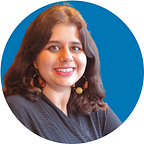Chapter 4: Participatory design activity with kids
As a participatory design activity, I conducted a workshop for 11-year-olds on solving Bangalore’s problems through their favourite games in order to learn these kids’ perception and understanding of environmental issues and their perspective on how a game related to value education can be made more enjoyable for engaging the users. The following is my account of the same-
Previous chapter
I went on to explore the questions and inferences derived from the previous research through actually engaging with the kids through participatory research work.
The workshop was conducted with 30 students of class 6 of a private school in Yelahanka, Bangalore to understand:
1- Kids’ perception and understanding of environmental issues
2- Perspective on how a game related to value education can be made more enjoyable for engaging the users.
It was a challenge to
1- Designing the activity in order to engage the kids in doing the activity while having fun
2- Getting permission from a school to allow me to conduct a session during exam time
The following is the permission letter I had written to the school for the same:
The workshop was conducted in presence of the class teachers. I made instructional placards, in case the class would be too noisy and there is trouble in relaying instructions. Also, I made sure to constantly provided positive reinforcement to the kids by repeating many times that- no answer they will give is a wrong answer and that we are having a fun activity. When they got stuck, I would try to ask them questions to lead them to their own ideas.
Various stages of the participatory design activity
Stage 1 (5–10 mins)
Kids were asked to write a superhero name for themselves and the powers they would have if they were superheroes.
In the student worksheet provided, they entered their superhero names and super powers. Then we discussed -what do superheroes do and we concluded that superheroes save the world from evil.
Following this, I led them to the context of the city of Bangalore and asked them what all are the evils in the city of Bangalore. We discussed pollution, crime, etc as being those evils.
Student worksheets: Students were asked to enter their superhero name and superpower
Stage 2 (20 mins)
Now they had come to an understanding of what problems (evils) existed to the city of Bangalore and what a good citizen as a “superhero” would identify as threats to the city of Bangalore. Now, being in the shoes of superheroes, I wanted them to actually be the superhero as we discussed. For this, I designed a group activity.
The class was divided into 4 groups. Each group was given a different issue in Bangalore to solve. They were given a bin each labelled:
- How to solve the garbage problem?
- How to solve the traffic problem?
- How to stop lake pollution?
- How to stop air pollution?
They were given 7 solution cards each and one empty card so that they can write their own solutions. None of the empty cards was returned unfilled. They were full of ideas on how to solve those problems. One kid from each group was called and asked to read out the teams solutions and we all clapped for the superheroes having saved the day.
So far, stage 1 and stage 2 were mostly helping me set the context for the participatory activity- stage 3:
Stage 3 (30–45 mins)
Each student was given an A3 sheet and told to divide their sheets into four segments.
In the first segment, I asked them to draw or list their favourite games.
Then, in the second segment, I asked them to write about what issues they would choose to solve to save Bangalore and how they would solve that issue as we had previously discussed.
In the rest of the sheet(remaining two segments), they were asked to combine their favourite game with a solution in order to solve the issue they chose to solve as a superhero.
Stage 4: Reflective activity
In the student worksheet, they drew/ wrote about the favourite part of the activity/day. They were also asked with whom they prefer most to play games with. This was to make them reflect on the day’s activities and also for me to understand them better.
Analysis of information collected:
I systematically analysed all the data collected using affinity mapping. I found the reflective part of the activity to be the most insightful in terms of learnings about the kids
Key Insights from the activity
- They enjoyed group activities. The social aspect of the activity where they were interacting with their friends in related and non-related ways helped shape their experience in the activity.
- Sharing of ideas was a key part of the activity. They enjoyed sharing their work with the rest of the class and being rewarded (claps from everyone)
- They enjoyed having control over the outcomes of the game. Giving creative control to kids over their learning process facilitates a positive learning atmosphere
- Taking ownership of the problem (as superheroes) increased their engagement in the activity in the sense that it removed any inhibitions they would have had in their heads of coming up with solutions as an ordinary person.
